Today I want to talk about a subject that comes up every time we discuss whole life insurance with someone. The flexibility of whole life insurance is a major concern among our clients and prospective clients.
This is an area where I can empathize with people. Sure things are going great now, but I don't know that this will be the case well into the future. What happens if I suddenly can't put this $50,000 per year into my whole life policy? Do I have to forfeit my policy? Will I lose my death benefit? What happens to my cash value? Will I still earn dividends? Will I have to pay a penalty?
These questions and more come up, so let's learn just how flexible and accommodating blended whole life insurance can be.
Adjusting your Premium on a Whole Life Insurance Policy
Contrary to popular belief among certain financial hucksters who make a lot of money telling people not to buy whole life insurance, you absolutely can make adjustments to the premiums that you pay.
These adjustments DO NOT result in your losing your policy or paying a penalty. There's very little that you need to do when it comes to adjusting your premium. You simply give the life insurance company a smaller payment and (sometimes) offer instruction on how you want your money applied. The life insurer often has an automated process to guide this instruction so there's very little work on your part.
Consider the following example:
Kevin buys a whole life policy with a $50,000 premium that he funds each year from his income. 10 years later, Kevin finds himself in a situation where he cannot pay the $50,000 premium. He needs to stop paying the premium for a while.
Here's a ledger depicting such a scenario with all the values reporting what happens to the cash value, dividends, and death benefit when Kevin stops paying his premiums:
As you can see from the ledger, Kevin can suspend his payment without losing his policy. His cash value remains and continues to grow. He still earns dividends on the policy. He also maintains an outstanding death benefit that remains much higher than it was when he originally bought the policy.
There are no fees that Kevin pays as a result of suspending his policy. There is also no additional fee that Kevin owes when he begins paying his premium again. He takes four years off from paying his premium and his whole life policy continues to accumulate cash value. It's also ready to grow more of his cash four years later when he's ready to begin putting more money back into the policy.
Things to Consider about the Flexibility of Whole Life Insurance
If you're at least moderately successful, there's a good chance I know one of your biggest fears. The possibility that one day somehow you won't have the income you presently have. We all look over our shoulder for this boogeyman. We tell ourselves that one day, once we reach X, we'll stop worrying about it. Spoiler alert, we're all lying to ourselves about that.
When people come to us looking to have us design and sell them a life insurance policy this fear comes up...all the time. In fact, in over 10 years of doing this, I've never once sold a policy to someone without being asked what happens if they can't come up with the money to pay the premium. And frankly, I'd be very suspicious of someone who didn't ask this question.
By the way side note, if you want to join the super cool people who have graciously purchased life insurance from us, click here to fill out the contact form. We'd love to hear from you.
There are a number of things to worry about when it comes to planning your future. Things like:
- A job loss
- An emergency
- An income reduction (maybe from a downturn in business or being pushed into a different position at work)
These are all potentially disastrous events when it comes to your personal finances and many of us face them. It's certainly nice to know that some financial tools, whole life included, isn't one of the things you have to worry about in the face of such adversity. Instead you simply reduce or suspend the payment to the policy and pick up where you left off once things turn in your favor.
Here's another example for you:
Vince buys a whole life policy with a $30,000 per year premium. After five years, he decides that he needs to reduce his premium by $20,000.
Here is a ledger that depicts this scenario:
Notice that, yet again, cash value, death benefit, and dividends all remain intact. Also notice that Vince does not pay any sort of fee to reduce his premium nor to bring it back up to the original $30,000.
One other consideration I'll note about flexibility. Not all reasons to reduce or suspend a premium payment are necessarily due to bad circumstances. Perhaps an opportunity exists that requires the individual to make premium adjustments. This is certainly a great situation, and it's also nice to know that whole life insurance won't be an impediment to such a situation.
What about Permanent Premium Reductions or Stoppages?
What happens if things change and now you need to permanently make a change to your whole life insurance premium. Perhaps you decide that you can no longer allocate so much money to it. Or maybe things have changes so dramatically that you need to permanently stop paying premiums. Surely this will upset the applecart and this will force you to forfeit your policy or at least pay some sort of fee. Right? Wrong.
All whole life policies come with a feature that allows you to make the policy paid-up. Triggering this benefit guarantees that the policy remains in force requiring no future premiums. What's more the policy will continue to earn dividends!
Consider the following example:
Ted opens a policy with a $75,000 annual premium. 11 years into the policy, things take a dramatic turn for Ted and he no longer has the cash to pay his premium. He's extremely doubtful that circumstances will return to a place where he can pay the premium so he triggers the paid-up options on his whole life policy. It would look something like this:
Starting in year 12, the policy is paid-up. It requires no future premiums and Ted gets to keep his policy in force. He'll still earn dividends. He can still take policy loans against the policy (or withdraw paid-up additions if he wishes).
Some of you might notice a reduction in the death benefit (Aha! A fee! I knew he was lying!). This happens because Ted will not be paying all of the premiums he originally planned to pay. So the life insurance company is going to reduce his death benefit by an amount tied to the premiums the life insurer originally planned on receiving but now will not.
Notice, however, that even with the death benefit reduction Ted still has a death benefit that is more than $500,000 larger than his original death benefit in year one. Also notice that the death benefit begins rising after he makes his policy paid-up...dividends are a wonderful thing!
That's cool, but Ted's premium is huge. I bet this only works for rich people like Ted. The little guy can't do this same thing. Here's the same example using the same insured with a $2,000 per year premium:
The numbers are much smaller, but the same principle still applies. The policy is paid-up. It remains in force. It continues to earn dividends. And death benefit after making the policy paid-up is still larger than the initial death benefit. Post paid-up death benefit grows things to dividend payments.
The Benefits of Flexibility in Reverse
Sometimes...actually a lot of times...we design and implement policies for people who plan to pay premiums with a lump sum of cash they are sitting on. A common scenario looks something like:
Fredrick has $400,000 in cash sitting in a money market and wants to move it to whole life insurance to take advantage of the higher probably rate of return as well as the ability to use policy loans and not forfeit interest earned on the money. So we take this $400,000 and break it up into a multi-year payment into the policy. Why? Because insurancey reasons that's why (no actually if you want to know, you should contact us). This might be $400,000 broken up into 7 years, or ~$57,000 per year.
But sometimes clients who start out with a lump sum "find" other money at some point in the future. And when they do they'd like to continue the premium payment by using other money. Can they do this? You betcha!
Safe, Reliable, and Adaptable
Whole life insurance is safe. It offers protection against losses in economic markets and it also provides a death benefit to protect your loved ones.
Whole life insurance is reliable. Major life insurers engaged in issuing dividend paying whole life insurance have a century plus track record of paying dividends to policyholders, and that's on top of guaranteed interest accumulations.
But perhaps most important of all, whole life insurance is adaptable. It can accommodate an array of circumstances and it's versatile to fit your changing needs.
Not all whole life insurance is created or designed equally. Yes we know how to make all of the above happen, but not everyone does. So if you're looking at an old whole life policy, or considering a new one, we can show you things you've likely never seen before.
Is Life Insurance for You?
Want to know if life insurance belongs
in your financial plan? Contact Us today to find out.


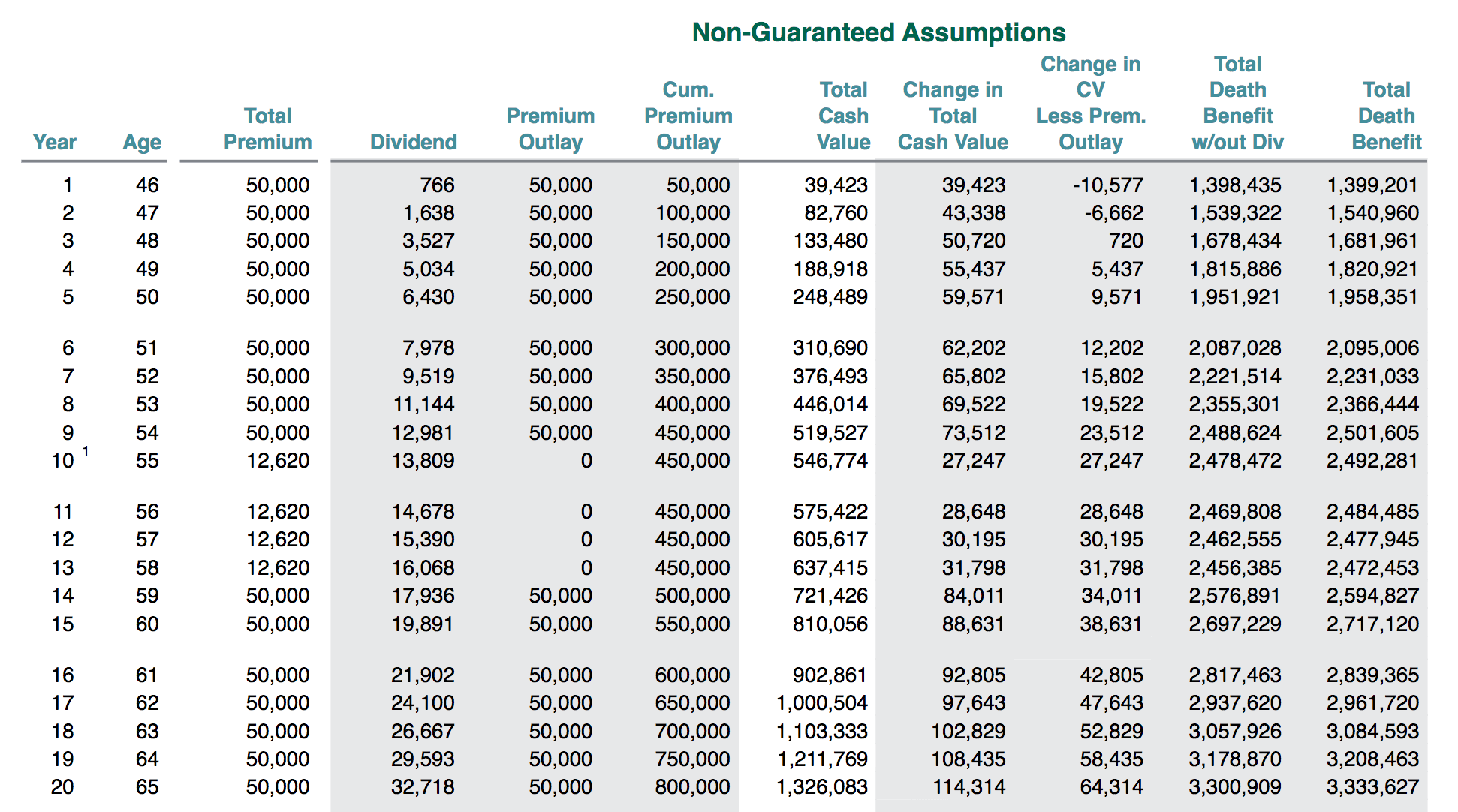
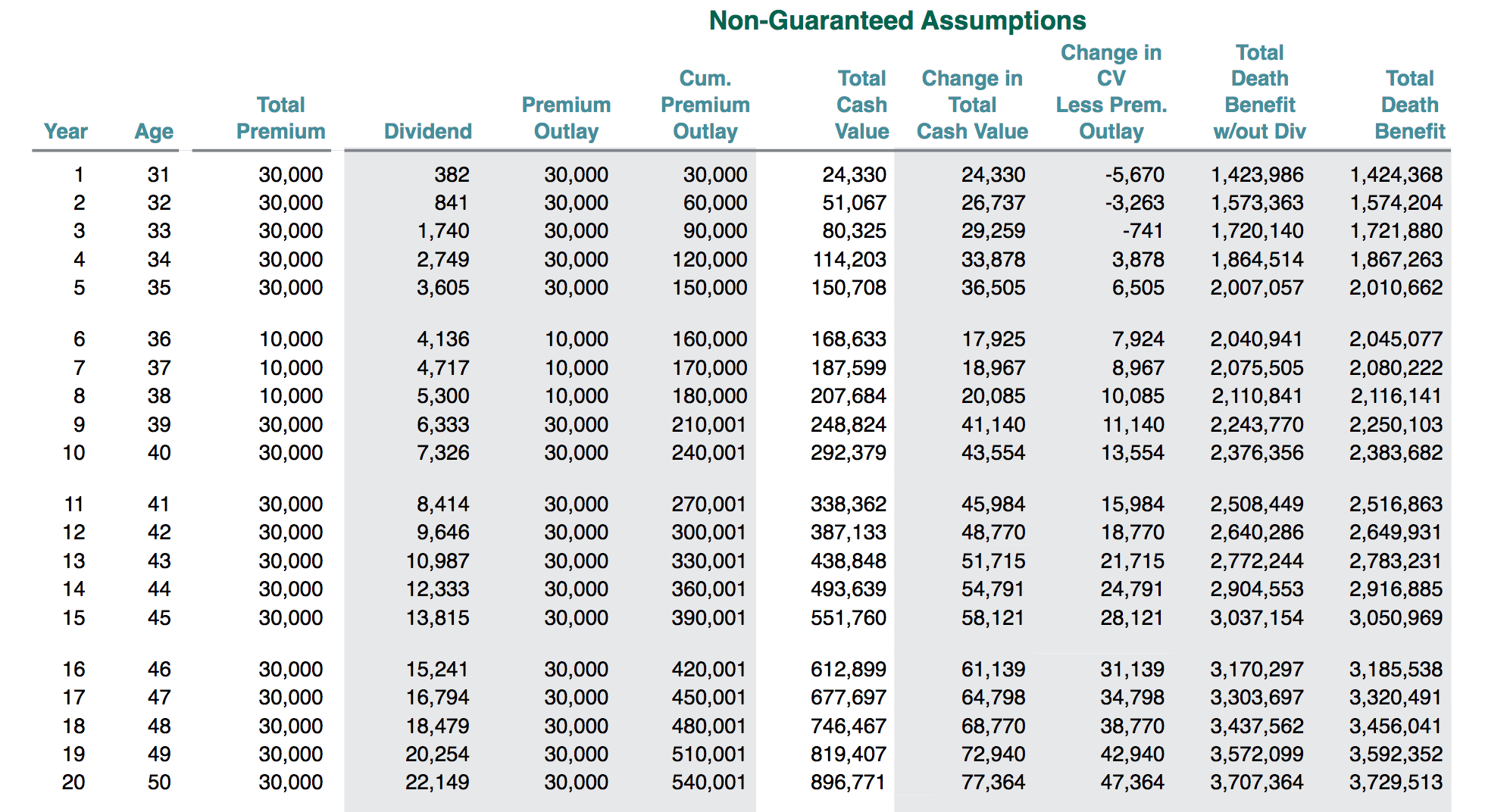
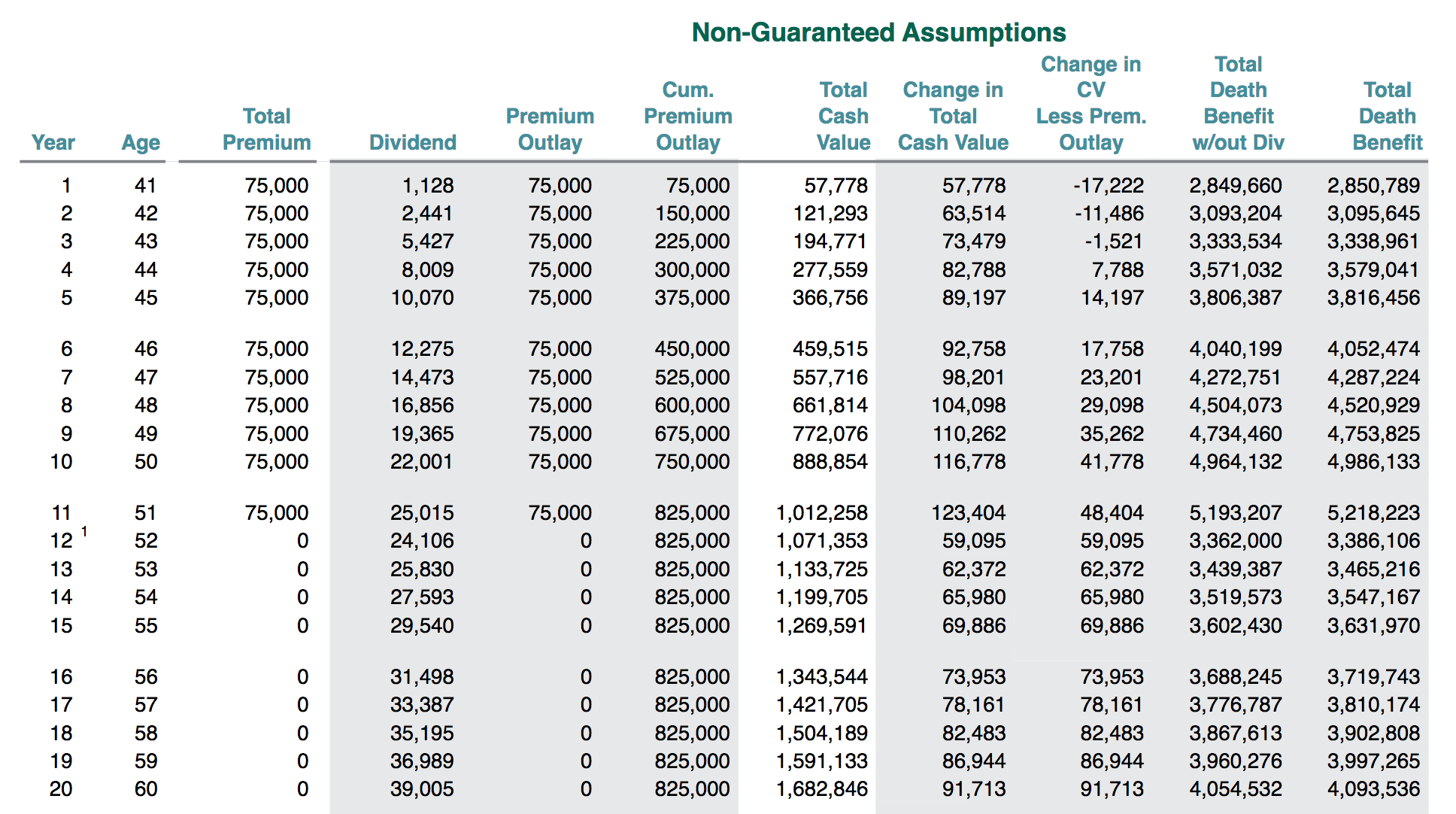
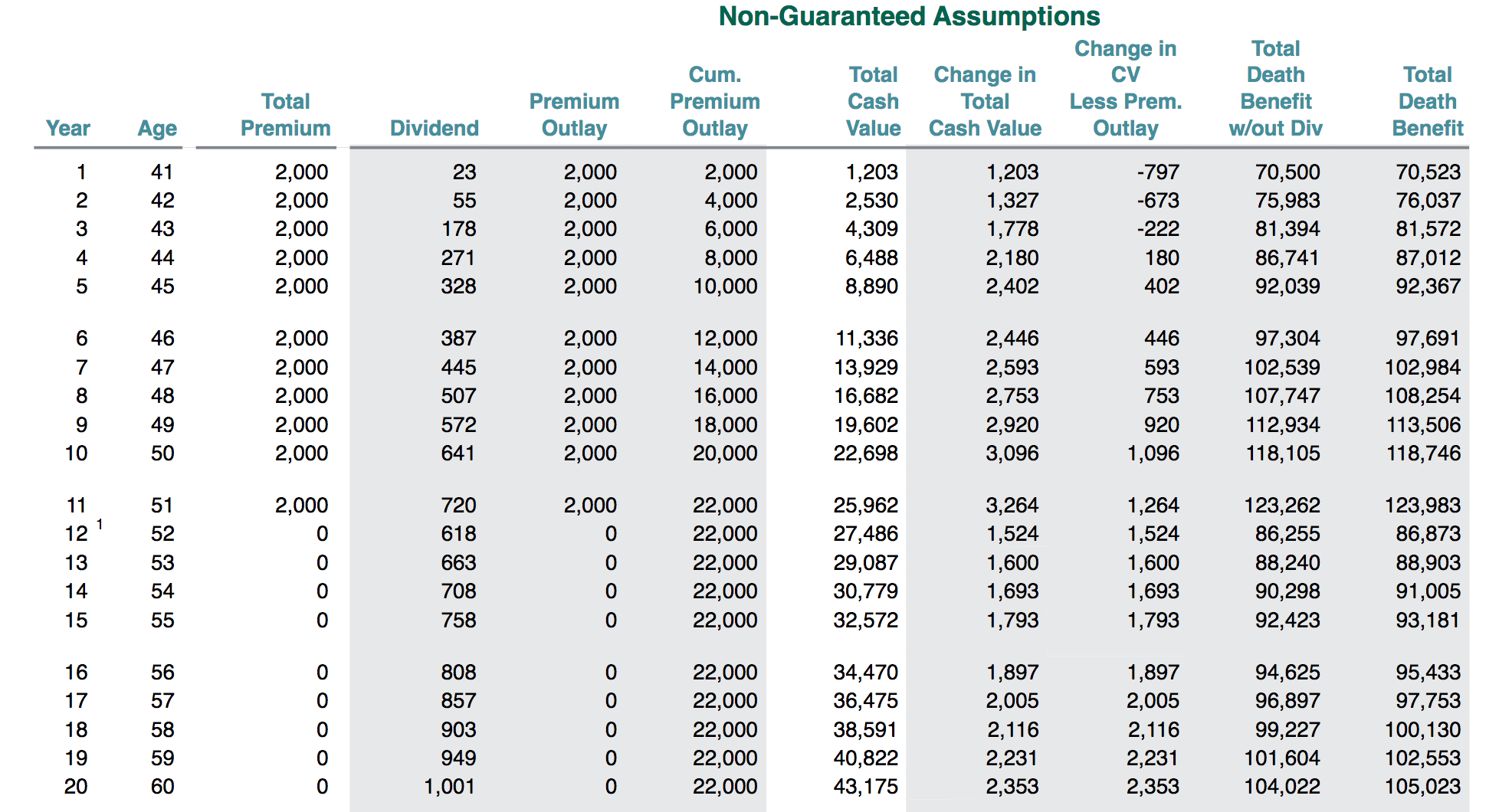
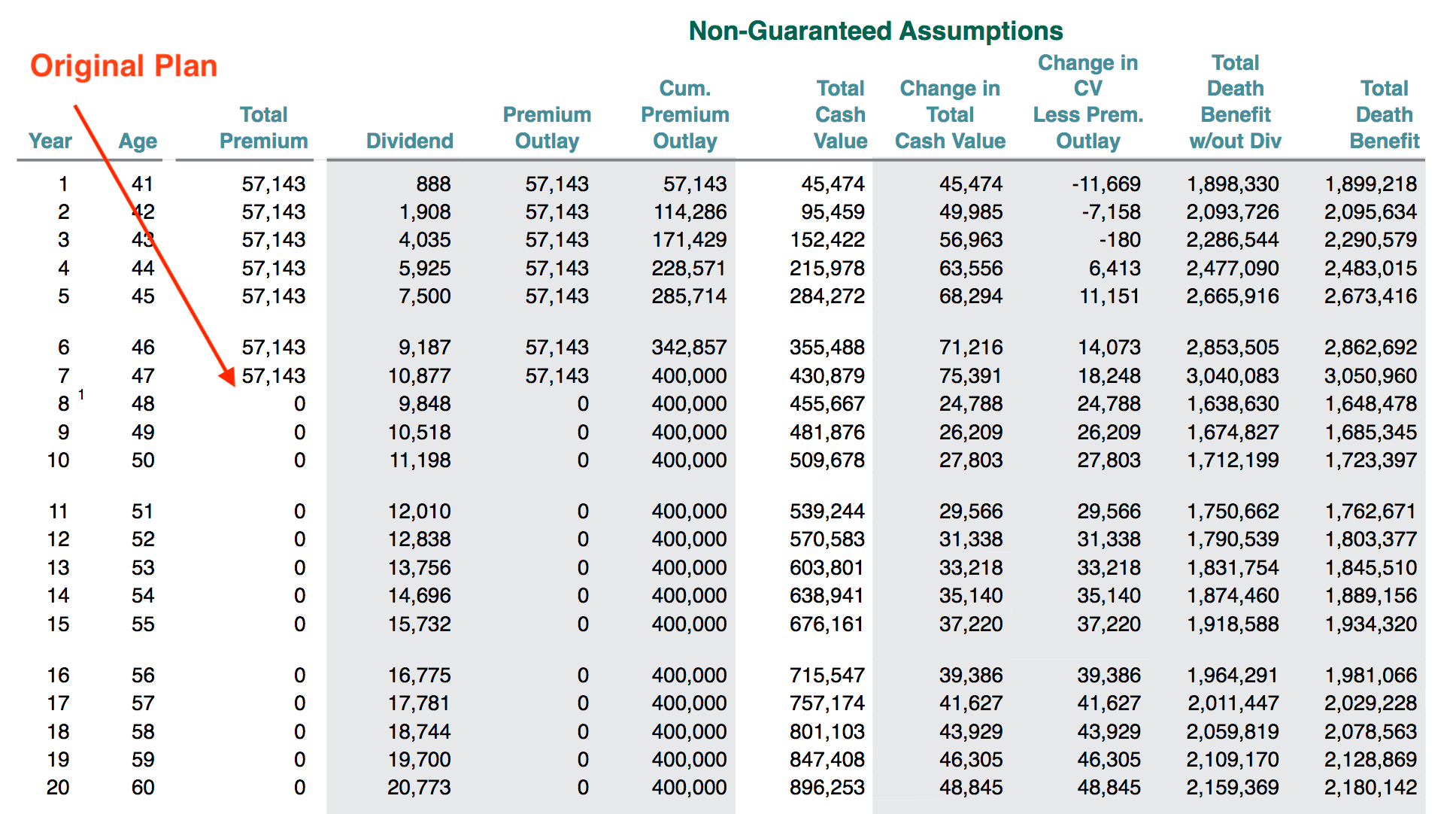
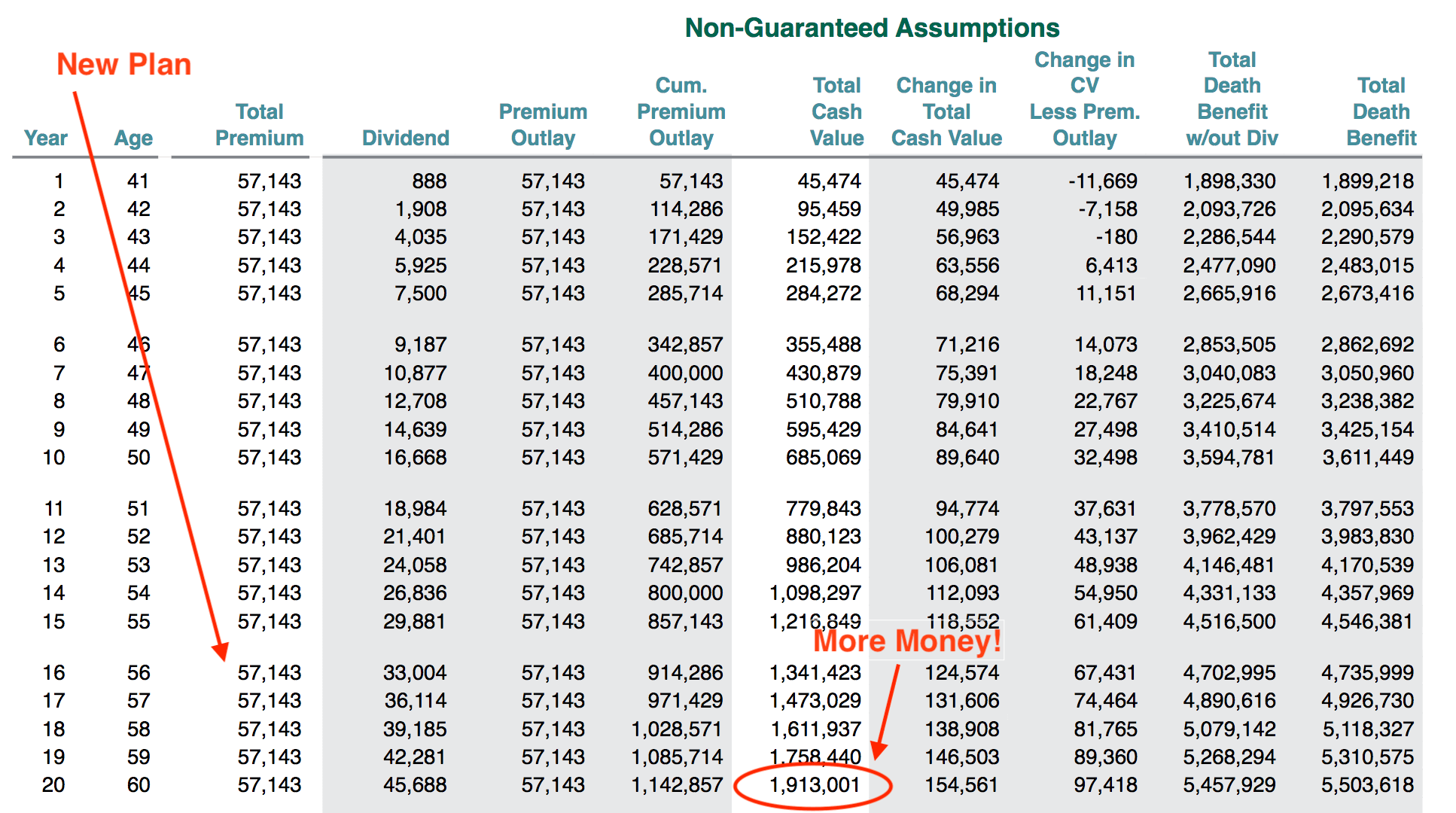
Thanks. This post is awesome and makes me feel better about my situation.
Last year, I decided to retire early (at age 58). But I’m scheduled to pay premiums on my life insurance policies until age 62. I can probably make the payments next year, but then for the last 2 years, I’m skeptical I can come up with the cash.
So I’ll talk to my agents before then. Somewhere around age 62, I assume I’ll have to start taking money out of my cash value to live on. I’ll just have to figure out the limits and mechanics of how to get money to live on from my cash value.
Thanks again.
You are welcome Ken. Thanks for the note!
And the cash gets 5.8% +- every year, any year, regardless of premium activity. Love to see the assumptions; there’s no hint. You’ll never see this set of numbers come to pass!
I’m not really sure what you are attempting to reference, but okay.
Ken assumes he can suspend premiums and make withdrawals and all will be fine. You know better! Omissions are the same as lies when they mislead. Come on, Brandon.
Umm Craig what the hell are you taking about?
Can a WL policy be reduced paid up in less than 7 years & still be a non-MEC policy?
If so, what’s the minimum amount of annual premiums- 2,3,4…?
The majority of the time the answer to this questions is no. There are some very rare occasions where RPU prior to year 7 will not cause MEC violation.
Would you say IUL is better for a LIRP and WL would be better for guaranteed DB in most cases?
Hi Wade,
No I wouldn’t necessarily say that. Whole life can work in a LIRP application and for guaranteed death benefit it depends on a few circumstances. The GUL aspect of universal life insurance might make it preferable to whole life insurance when guaranteed death benefit is the focus.
“Bob opens a policy with an $X premium.” What is the initial coverage for each of these hypothetical policies? How does the death benefit grow? What are the terms of growing the death benefit? How does Ted’s cash value grow faster than his dividend even after he stops paying the premium? Where does that extra growth come from? How does the death benefit grow faster than the cumulative premium outlay + cumulative dividends for each of these policies?
Hi John, your questions are a bit scattered and unorganized so the answers in–sort of–order are:
We provided ledgers that speak to specifics of the policy.
Guaranteed interest.
Paid-up additions.